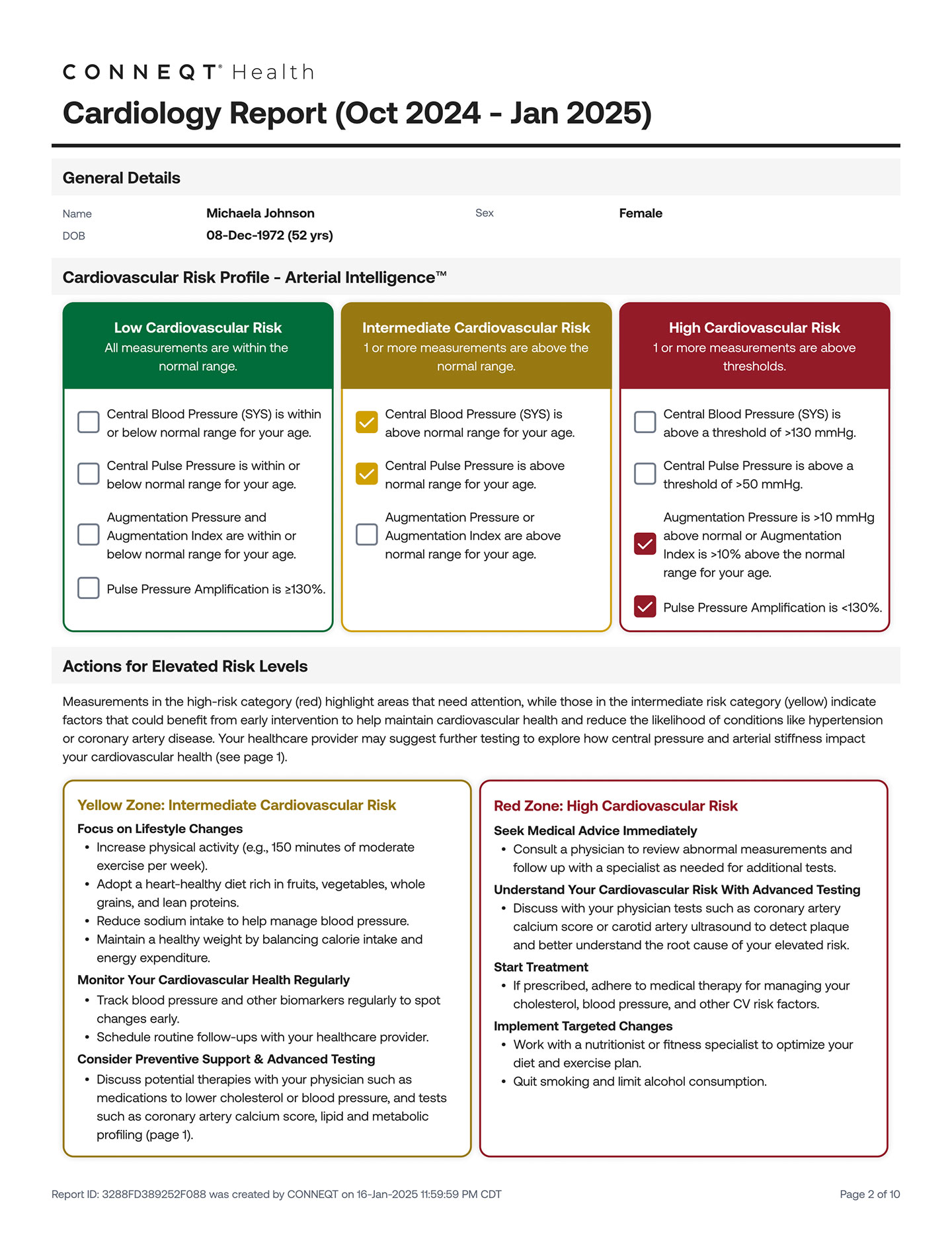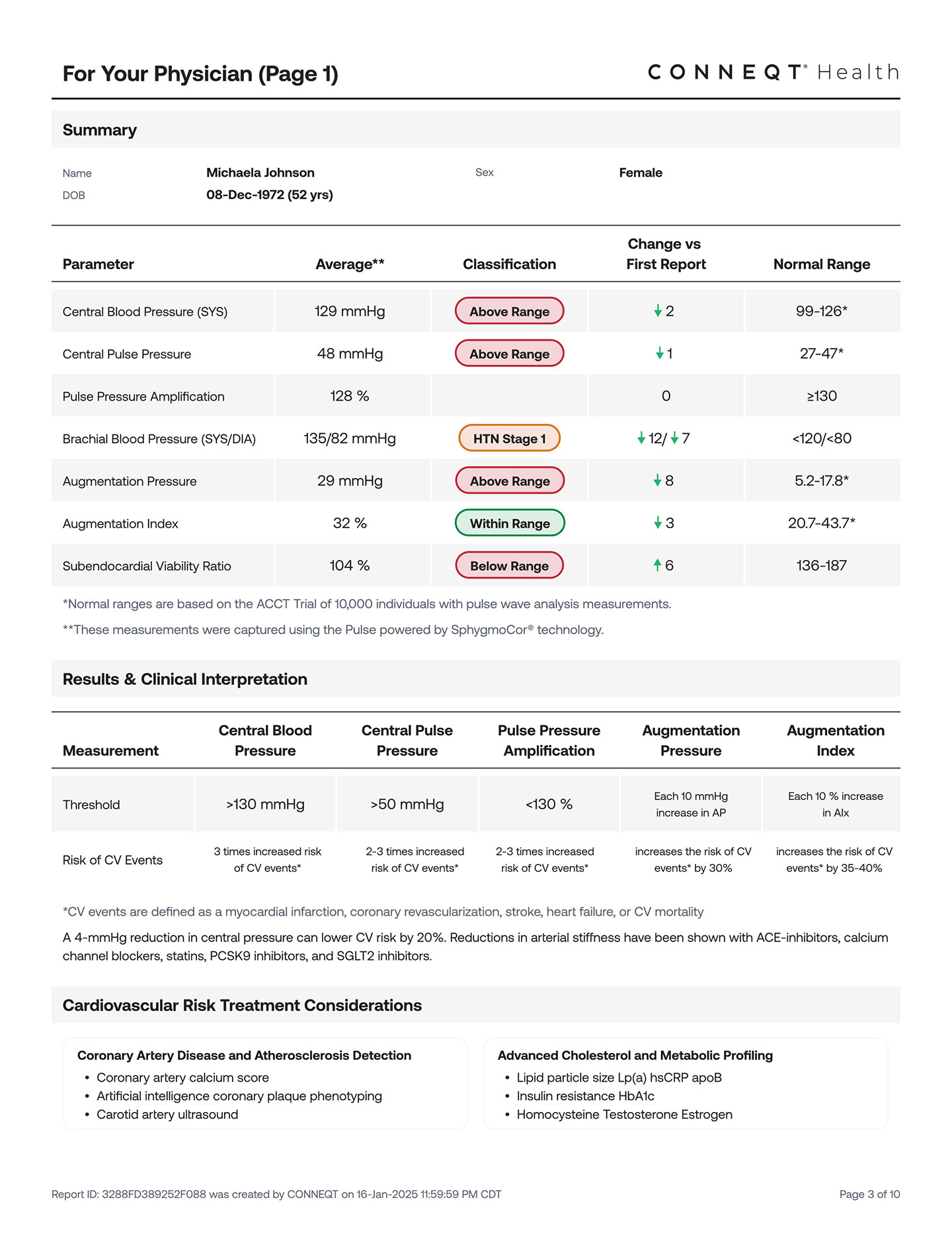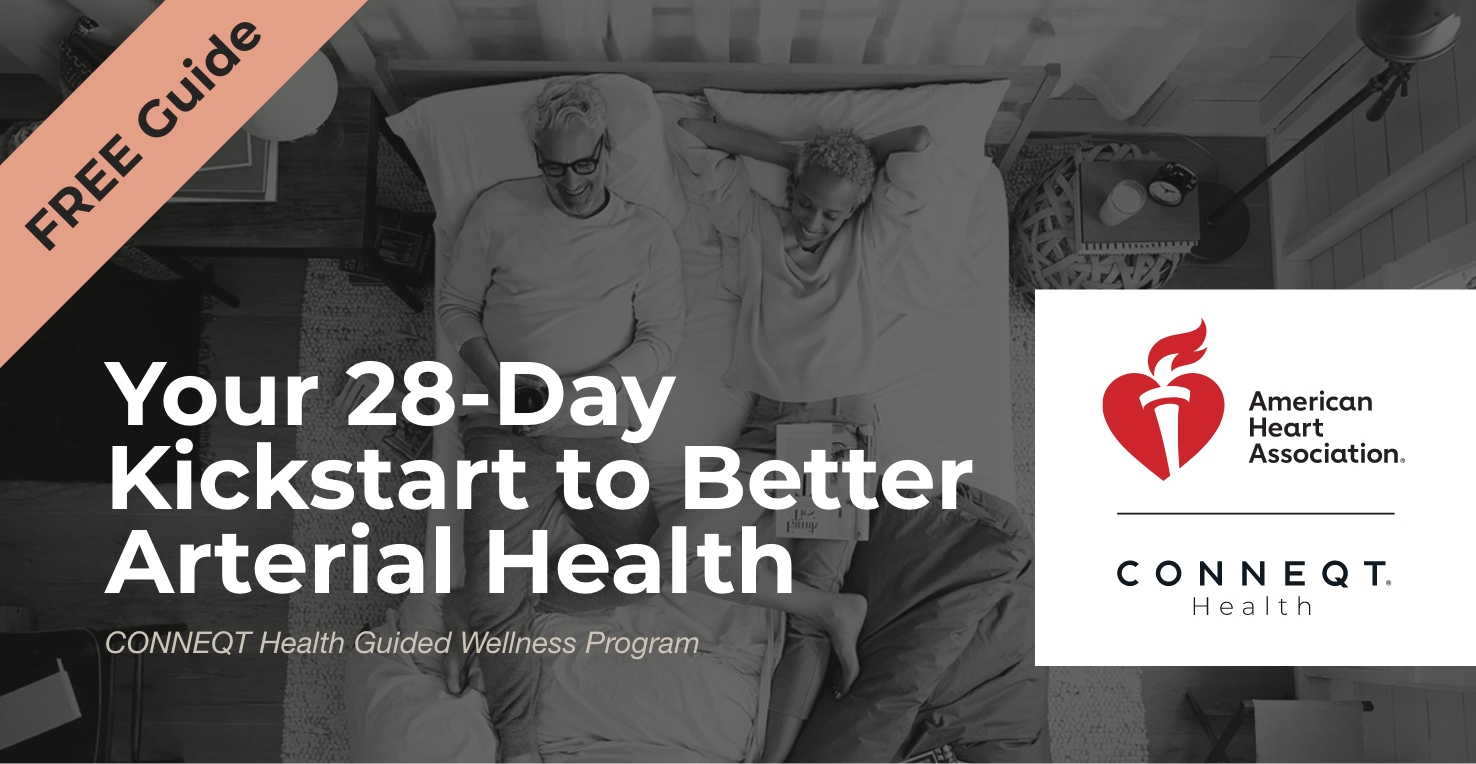
CONNEQT Arterial Health Assessment - Clinically Proven. Research Backed.
Comprehensive arterial health analysis that reveals hidden risks linked to heart disease, stroke, and vascular aging.
*An itemized receipt is provided for FSA/HSA reimbursement.
CONNEQT® Pulse
The world’s most advanced personal arterial health monitor.
You’ll take readings with a device that goes beyond traditional blood pressure. By measuring key vascular biomarkers beyond traditional blood pressure, CONNEQT Pulse delivers deeper insights into your cardiovascular function.
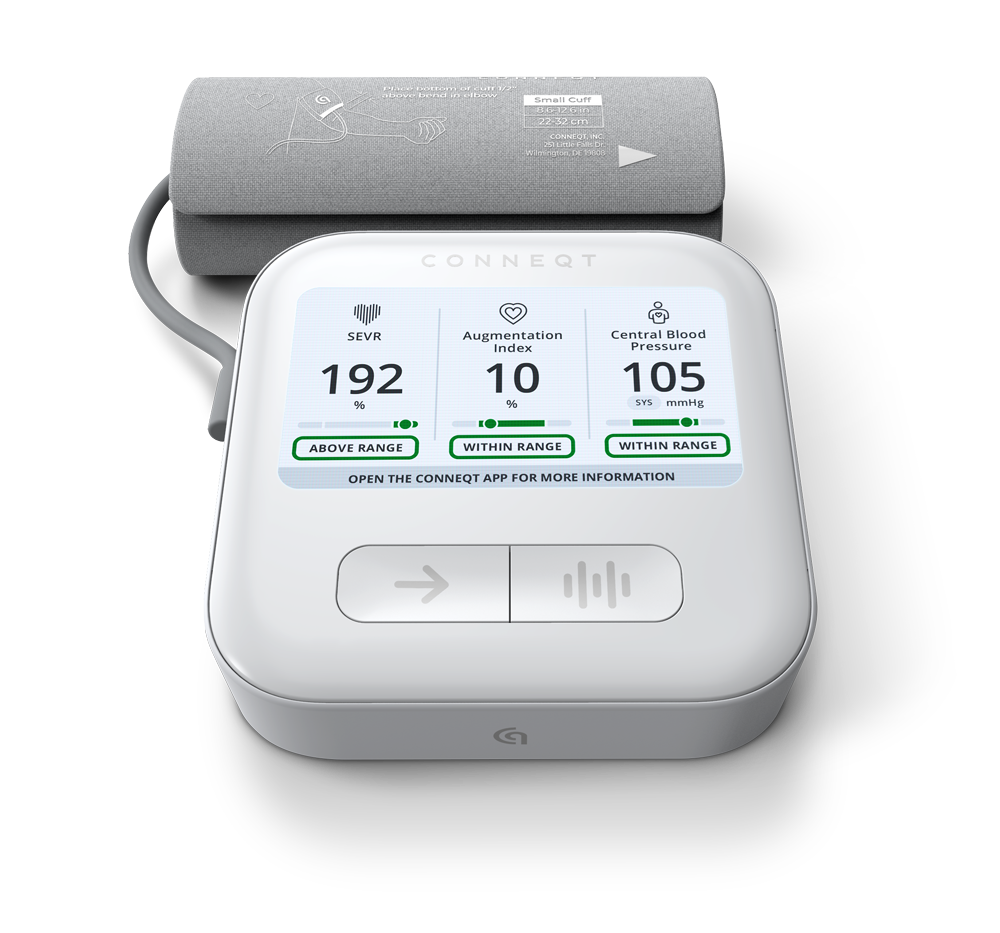
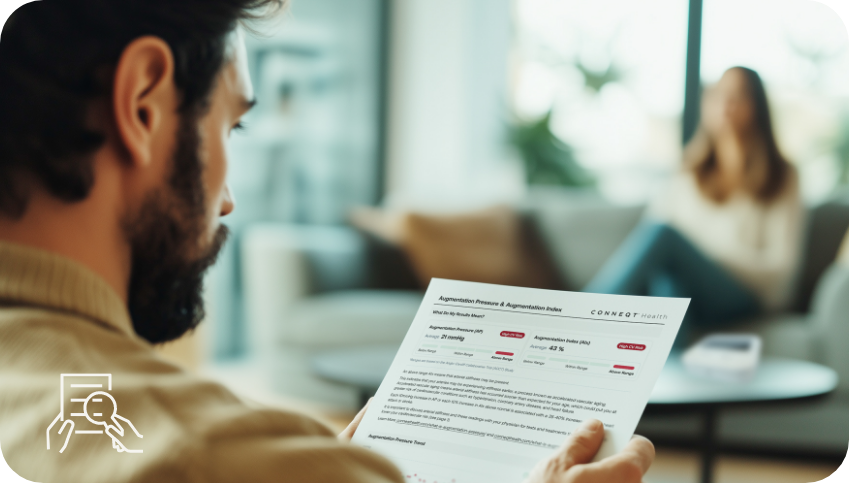
Cardiology Report
After completing a series of readings, you’ll receive two personalized cardiology reports, each providing a detailed analysis of your arterial health and cardiovascular function.
These comprehensive reports offer actionable insights to help you monitor your vascular well-being, detect early risk factors, and make informed health decisions. They can also serve as a valuable resource for discussions with your physician or cardiologist.
2. For your physician
Start a data-driven conversation with your doctor. Your report includes:
- A clear explanation of arterial stiffness, its measurement, and its impact on cardiovascular health.
- A comprehensive summary of key vascular biomarkers, clinical interpretation, and treatment considerations to help guide medical decisions.
CONNEQT®App
Gain real-time insights into your arterial health and understand how your cardiovascular system is functioning like never before.
The CONNEQT App translates complex vascular data into actionable recommendations, helping you track trends, optimize heart health, and make informed lifestyle choices. Follow Guided Programs for tailored steps to improve your arterial health and overall well-being.
"Combined with a pulse pressure monitor and algorithms, the CONNEQT Pulse predicts your risk of hardening arteries and heart disease."

The smallest changes can lead to the biggest health wins
Every improvement in arterial function supports overall health, including:
- Cardiovascular Health – Reduce long-term risk of heart disease and stroke.
- Brain Health & Cognition – Optimize oxygen flow to the brain for mental clarity.
- Metabolic Resilience – Support better glucose control and energy balance.
- Physical Performance – Improve circulation for faster recovery and endurance.
- Longevity & Aging – Slow down vascular aging and extend healthspan.
